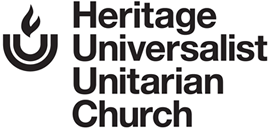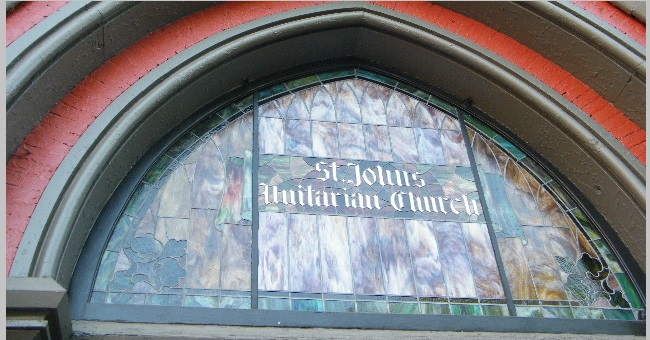by Mike Roberts, Church Historian
The histories of the two large sister UU churches in Cincinnati are radically different. The current First Unitarian Church developed along many parallel lines as our own church. First Unitarian started its life worshipping in member homes in frontier Cincinnati much like our own church did and at nearly the same time. The congregation moved to several non-residential buildings but finally settled into a downtown location at Fourth and Race and built there in 1830. Later, another church was erected at 8th and Plum. This group of religious liberals was known as The First Congregational Church but was affiliated with the American Unitarian Church. It generally prospered and was connected to the heartland of Unitarian thought in New England. On the frontier, there were few Unitarian ministers. Preachers had to be recruited from New England. Nearly all of the early First Unitarian pastors came from there, much as our own early Universalist ministers did. The most famous was William Henry Channing, the nephew of William Ellery Channing. However, these hardy New England clergy were unused to the hot, humid and unhealthy climate of Cincinnati and many suffered medical problems once settling into the city. Their stays were short, an experience our First Universalist Society also suffered through with many of its early New England born and bred ministers.
Abolition was the hot button issue of the day and the local Unitarian church was considered to be liberal thinking and generally supported abolition. By the 1850’s both the Unitarian and Universalist churches were located on Plum Street. A worshiper could walk out of either church and gaze across the Ohio River to see an America where slavery was legal. This angered many parishioners but some had friends and family in the South and were less than enthusiastic about abolition. It caused rifts in both churches.
Both churches also eventually saw a need to leave downtown for the healthier environs of the surrounding hills. Our Universalists settled in Walnut Hills and First Unitarian settled just off Reading Road. Many of the city’s leading lights attended these two churches, so their influence on the city was beyond their numbers. First Unitarian’s most famous member was William Howard Taft, the only American who served both as President of the United States and Chief Justice of the Supreme Court.
St. John’s Unitarian Universalist Church had a much different origin. In the early 19th century immigrant melting pot of Cincinnati, turmoil over religious views was common. A group of disenchanted Presbyterians, Methodists, Lutherans and Catholics, most of whom were German, formed their own church. It contained members with many different religious views and disagreements were frequent. Many of the disputes erupted between Northern or Low Germans and Southern or High Germans. The disagreements often centered on the meaning and conduct of communion services. During one heated exchange, the floor collapsed beneath the congregation and many were dumped into the basement. It was then decided that a more solid structure was needed. A stable existing church was purchased in 1833 on 6th Street between Vine and Walnut. Just 25 years later, the congregation settled into a new, beautiful church at 12th and Elm. Germans continued to dominate the church at a time when the German speaking population of the city had swelled to 46,000. The worship services were conducted in German and it was not until 1918 that only English services were offered.
Because of these many disputes over theology, worshipers came and went at a rapid rate and it was only through the efforts of several strong and long-tenured ministers that the church was held together. The church changed names numerous times and had no national affiliation. Finally in 1924, it was noted that unaffiliated churches were suffering losses of members at a rapid rate. The church then joined the American Unitarian Church. Like the other sister churches, there came a time to abandon downtown and a new structure was built in the 1940’s in Clifton.
Next, a discussion of national merger.
Image: Stained glass in old building of St. John’s Unitarian Church, corner of 12th and Elm Streets, Cincinnati, Ohio.
Photograph courtesy of Barb Barnes.

